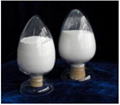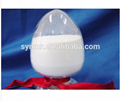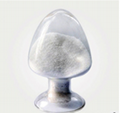| Model: | - |
|---|---|
| Brand: | - |
| Origin: | Made In China |
| Category: | Chemicals / Organic Chemical Materials / Pharmaceutical Chemicals |
| Label: | Geranium EXT/Methylh , Geranium EXT/Methylh , Geranium EXT/Methylh |
| Price: |
-
|
| Min. Order: | 10 g |
| Last Online:08 Jul, 2016 |
What is METHYLHEXANAMINE(1,3DMAA)?
1,3-Dimethylamylamine (also called DMAA, 1,3-dimethylpentylamine or methylhexaneamine) is a potent CNS (central nervous system) stimulant that comes in poweder format. It’s commonly advertised as being derived from geranium oil, but Natural Products Insider reports that such is not the case; DMAA is not naturally derived from geranium oil.
Up until very recently, you could find DMAA in many over the counter sports and weight loss supplements.
How it works?
A large number of supplements focusing on fat loss and workout energy (thermogenic or general-purpose stimulants) now use the ingredient in concert with other substances such as caffeine, a combination similar to the combination of and caffeine.
Methylhexanamine-containing supplements sometimes list "geranium oil" or "geranium extract" as a source of methylhexanamine. However, geranium oils do not contain methylhexanamine, and the methylhexanamine in these supplements is added in the form of synthetic material.Recent studies have shown that DMAA is found in some types of geraniums.
Methylhexanamine is synthesized by reacting 4-methylhexanone-2 with hydroxylamine, which converts the 4-methylhexanone-2 to 4-methylhexanone-2 oxime, which is reduced with hydrogen by means of a catalyst; the resulting methylhexanamine can be purified by distillation.
Dosages and S estion
Pharmacological effects after oral intake can be expected on the lungs (bronchodilation) and the nasal mucosa following a single oral dose of about 4–15 mg. Pharmacological effects on the heart can be expected following a single oral dose of about 50–75 mg. Pharmacological effects on the blood pressure can be expected after a single oral dose of about 100 mg. Because of the long half-life, there is a risk that repeated doses within 24–36 hours could lead to steadily stronger pharmacological effects








